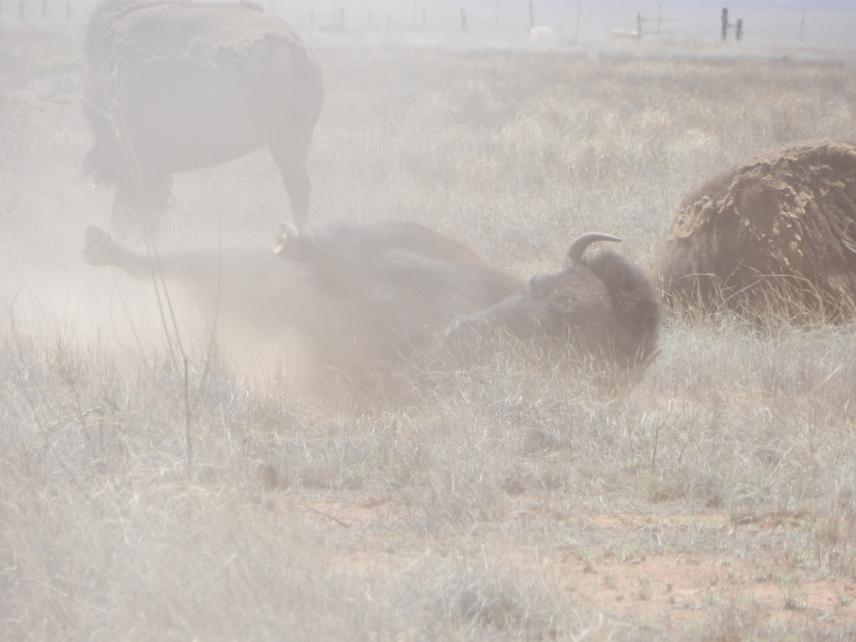Ana Laura Nolasco Velez
To determine and identify the effect of wallows made by bison on vegetation structure and composition, and establish the behavioural patterns and habitat use of the reintroduced bison herd.
North American Bison is considered a keystone species of the North American grasslands, but its ecological role has been virtually absent from most of its former range, since the ca. 30 million head which once roamed across the Great Plains were reduced to less than 1000 individuals at the end of the 19th Century. Thus, people and organizations from the United States, Canada and Mexico are working to restore the ecological function of bison in North America.

In this context, we are going to work with a bison herd captured in Wind Cave National Park, South Dakota, EUA and reintroduced on November, 2009, in Janos, Chihuahua, Mexico. Bison is considered an endangered species in Mexico so the successful establishment of the group is necessary to produce bison for reintroduction in other areas within the historical range of the species in the country. At the same time, since it is an important component of the ecosystem, its recovery is essential for the grassland ecosystem restoration and the conservation of other species which are benefited by the presence of bison.
For the success of reintroduction, it is necessary to follow up the reintroduced individuals to determine how the population is adapting to its new environment, to inform management decisions, as well as to determine the impact that the absent species is having in the ecosystem. With the present study we are going to produce information on non-existent knowledge about the behaviour of the reintroduced bison, and to examine the effects, in soil and vegetation, of the depressions (wallows) formed in the ground by the dust-bathing behaviour, which has been reported to increase biodiversity.
For this, we will make seasonal observations of the herd at different times of the day and in each season, to record the behaviour (states and events) using both, scan and focal methods. Also, we will use GPS collars in five individuals for a year, recording the location of the individual every 15 min.
We will identify the habitat preferences of the species inside the reserve. Finally we will take vegetation and soil composite samples to determine the impact of wallows made by bison in the structure and composition of vegetation, evaluating richness and abundance of annual plants, and available nutrients, compaction and moisture of soil, inside the wallows (disturbed area) and adjacent areas (undisturbed area).